 W
WAcerbas was a Tyrian priest of Hercules, who married Elissa, the daughter of king Mattan I, and sister of Pygmalion. He was possessed of considerable wealth, which, knowing the avarice of Pygmalion, who had succeeded his father, he concealed in the earth. But Pygmalion, who heard of these hidden treasures, had Acerbas murdered, in hopes that through his sister he might obtain possession of them. But the prudence of Elissa saved the treasures, and she emigrated from Phoenicia. They landed and settled in North Africa, founding the city of Carthage.
 W
WAdmetus was a Greek king of the Molossians at the time that Themistocles was the effective ruler of Athens. When Themistocles was in control of Athens, Admetus had opposed him, but without any rancour.
 W
WAeropus II of Macedon, king of Macedonia, son of Perdiccas II, was guardian during the minority of his king and kinsman, Orestes, with whom he reigned for some years after 399 BC.
 W
WAgis I was a king of Sparta and eponym of the Agiad dynasty. He was the son of Eurysthenes, first monarch of this dynasty, which ruled the city along with the Eurypontids.
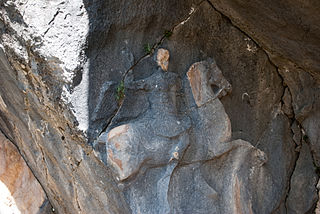 W
WAlcetas, was the brother of Perdiccas and the son of Orontes from Orestis. He is first mentioned as one of Alexander the Great's generals in his Indian expedition.
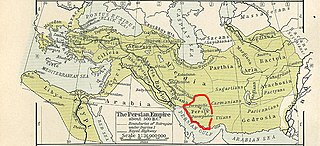 W
WAlexander was brother of Molon. On the accession of the Seleucid king Antiochus III, afterwards called the Great, in 223 BC, he entrusted Alexander with the government of the satrapy of Persis and Molon received Media. Up to that time, local rulers of Persis, the Fratarakas seem to have been in charge of the region, between circa 295 and 220 BC.
 W
WAmasis was an ancient Attic potter, active in Athens between 560/550 and 530/520 BC. Amasis’s pottery workshop also employed a well-known painter, who is conventionally named the Amasis Painter after the potter, and generally considered as one of the best Archaic vase painters. His works are mostly black-figure, but some red-figure vase paintings by him do occur. He and Exekias produced the first major painted amphorae with a narrative image on front and back, respectively. Famous works:Amphora: Satyrs harvesting grapes (Würzburg, Martin-von-Wagner-Museum) Amphora: Dionysos with a kantharos and youths with slain hares and foxes; (Munich, Staatl. Antikensammlungen)
 W
WThe Amykos Painter was an ancient Greek vase painter who worked in the red-figure pottery technique. His exact date of birth and death are unknown.
 W
WAmyntas II or Amyntas the Little, was the king of Macedonia for a short time, circa 393 BC. Thucydides describes him as a son of Philip, the brother of king Perdiccas II. He first succeeded his father in his appanage in Upper Macedonia, but Perdiccas II wished to deprive Amyntas of the appanage, as he had before endeavoured to wrest it from Philip. This project had however been hindered by the Athenians.
 W
WAndokides was a famous potter of Ancient Greece. The painter of his pots was an anonymous artist, the Andokides painter, who is recognized as the creator of the red-figure style, beginning around 530 BC. His work is compared with Exekias, who was said to have created the most detailed and best examples of black-figure pottery. Exekias is said to be the teacher of Andokides. Although the work of Andokides and his painter is considered inferior to that of Exekias, the invention of red figure was an important innovation.
 W
WArchidamus III, the son of Agesilaus II, was king of Sparta from 360 BC to 338 BC.
 W
WAreus I was Agiad King of Sparta from 309 to 265 BC, who died in battle near Corinth during the Chremonidean War. He was the grandson of Cleomenes II and was succeeded by his son Acrotatus II.
 W
WAthenais (Ἀθηναΐς) was a prophetess from Erythrae in Ionia, Asia Minor. She lived at the time of Alexander the Great. According to Strabo, Athenais was one of the oracles which claimed divine descent for Alexander the Great.
 W
WAtyanas was a nobleman and champion boxer from Adramyttium in Mysia. His father's name was Hippocrates. Atyanas won the boxing competition in 72 BC and is listed in Phlegon's summary of the 177th Olympiad. Cicero says that he was killed by pirates while L. Valerius Flaccus was governor of Asia.
 W
WAudoleon was an ancient Paeonian king son of Patraus, Agis or Ariston, the general of Alexander the Great. He was the father of Ariston, and of a daughter who married Pyrrhus of Epirus. In a war with the Illyrian tribe Autariatae he was reduced to great straits, but was succoured by Cassander.
 W
WBastareus, was an ancient king of Thrace, known only from a rare coin bearing his name. He was perhaps Paeonian.
 W
WBrygos was an ancient Greek potter, active in Athens between 490 and 470 BC. He is known as a producer of excellent drinking cups. About 200 of his pieces are known. The workshop of Brygos employed a red-figure vase painter who is conventionally called the Brygos Painter. The Brygos Painter is one of the most famous vase painters of his time. His work is characterised by its high quality and realistic depictions. The workshop of Brygos also employed the Briseis Painter, among others.
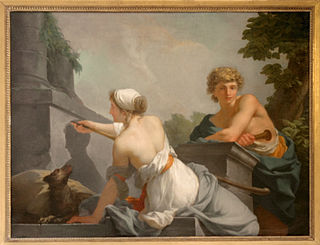 W
WButades of Sicyon, sometimes mistakenly called Dibutades, was the first ancient Greek modeller in clay. The period at which he flourished is unknown, but has been put at about 600 BC. The story is that his daughter, Kora of Sicyon, smitten with love for a youth at Corinth where they lived, drew upon the wall the outline of his shadow, and that upon this outline her father modelled a face of the youth in clay, which he baked along with the clay tiles which it was his trade to make. This model was preserved in Corinth until Lucius Mummius sacked that town. This incident led Butades to ornament the ends of roof-tiles with human faces, a practice which is attested by numerous existing examples.
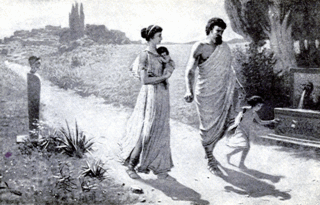 W
WChilonis was a Spartan princess and queen: daughter, wife, sister and grandmother of four different Spartan kings: Leonidas II, Cleombrotus II, Cleomenes III and Agesipolis III respectively.
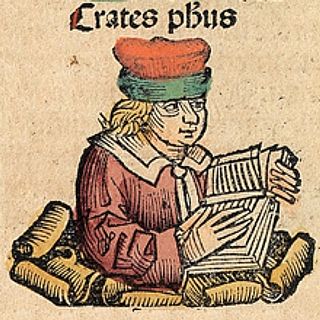 W
WCrates of Athens was a Platonist philosopher and the last scholarch of the Old Academy.
 W
WCtesiphon was an orator in Athens during the reign of Alexander the Great. He is best known for sparking the controversy that led to Demosthenes' speech On the Crown and Aeschines' speech Against Ctesiphon.
 W
WDemetrius Triclinius, a native of Thessalonica, was a Byzantine scholar who edited and analyzed the metrical structure of many texts from ancient Greece, particularly those of Aeschylus, Sophocles and Euripides. He is often compared favorably with two contemporary annotators of ancient Greek texts, Thomas Magister and Manuel Moschopulus. He also had knowledge of astronomy.
 W
WEchion, also known as Aetion, was a celebrated Greek painter spoken of by Lucian, who gives a description of one of his pictures, representing the marriage of Alexander the Great and Roxana. This painting excited such admiration when exhibited at the ancient Olympic Games, that Proxenidas, one of the judges, gave the artist his daughter in marriage.
 W
WElpinice was a noble woman of classical Athens.
 W
WEpicleas was an admiral from Sparta during the Peloponnesian War.
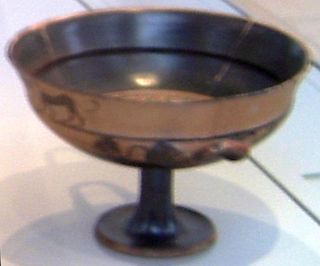 W
WErgoteles (Έργοτέλης) was a Greek potter, active in Athens around the middle of the 6th century BC. He was the son of the famous potter Nearchos and the brother of Tleson. Three signed Little-master cups by him are known:Berlin, Antikensammlung F 1758 Florence, arts trade Oxford, Ashmolean Museum G 1004
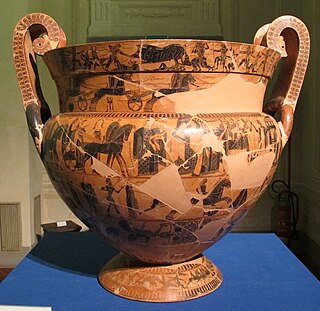 W
WErgotimos (Έργότιμος) was a Greek potter, active in Athens, circa 570–560 BC. His son Eucharios was also a potter, as was a grandson whose name is not known. The following works signed by him are known:Berlin, Antikensammlung 3151: footless cup Berlin, Antikensammlung V. I. 4604: 'Gordion cup', from Gordion Delphi: Fragment of a skyphos or kantharos Florence, Museo Archeologico Etrusco 4209: volute krater, so-called 'François vase' London, British Museum and Cambridge, Fitzwilliam Museum: Fragments of two cups from Naukratis New York, Metropolitan Museum 31.11.4: Stand
 W
WEuryleonis was a celebrated woman Olympic charioteer.
 W
WEuthymides was an ancient Athenian potter and painter of vases, primarily active between 515 and 500 BC. He was a member of the Greek art movement later to be known as "The Pioneers" for their exploration of the new decorative style known as red-figure pottery. Euthymides was the teacher of another Athenian red-figure vase painter, the Kleophrades Painter.
 W
WEutychides of Sicyon in Corinthia, Greek sculptor of the latter part of the 4th century BC, was a pupil of Lysippus. His most noted work was a statue of the Tyche of Antioch, a goddess who embodied the idea of the then newly founded city of Antioch. The Tyche was seated on a rock, crowned with towers, and having the river Orontes at her feet. There is a small copy of the statue in the Vatican. It was imitated by a number of Asiatic cities; and indeed most statues since created that commemorate cities borrow something from the work of Eutychides.
 W
WEvagoras II or Euagoras II was a king of the Ancient Greek city-state of Salamis in Cyprus, and later satrap for Achaemenid Persia in Phoenicia.
 W
WThe Haimon painter was a anonymous 5th-century BC Ancient Greek painter and draughtsman, so named by C.H.E. Haspels and John Beazley on account of a recurring subject in his black-figure vase painting—the Sphinx and its victim, the last of whom—according to a Greek myth—was Haimon. His name is unknown, but individual characteristics of style suggest the existence of a unique artistic personality. He specialized mostly in lekythoi and was closely related in manner to other contemporary Athenian vase-painters.
 W
WThe Hasselmann Painter was an ancient Greek, red-figure, vase painter. He worked in the mid-5th century BC.
 W
WThe Heidelberg Painter was an Attic vase painter of the black-figure style, active between about 575 and 555 BC. He is considered one of the most important painters of Siana cups. Along with the C Painter, he is considered the main representative of his style. Generally, the Heidelberg Painter is regarded as the more accomplished artist of the two, although his work did not reach the same breadth of scope. In contrast to many of his contemporaries, he placed special emphasis on the depiction of human figures, at which he was very adept. His figures are very detailed, but often drawn rather sloppily. His early works resemble those of the Comast Group, the later ones those of the Amasis Painter.
 W
WHermogenes was an Attic potter. He was active in Athens in the mid-6th century BC and belongs to the group known as the Little masters. Hermogenes mainly produced cups (kylikes). Well-known are his Band cups with depictions of women's heads on the band. The Hermogenic skyphos, a specific type of skyphos with decoration resembling that of band cups is named after him. Hermogenes was an innovative potter. For example, similar to the potter Amasis, he made Lip cups with feet derived from those of Siana cups.
 W
WKachrylion was a potter of Greek red-figure pottery at the end of the 6th and the beginning of the 5th century. At his pottery had worked some of the most important attic-Greek vase painters of these times, so Euphronios and Oltos. He signed 29 kylixes and one plate.
 W
WKrokinas of Larissa or Kroukinas was an Ancient Greek athlete, who won the Stadion and the Diaulos of the 94th and later 96th Olympic Games.
 W
WMakron was an ancient Greek vase painter active in Athens ca. 490–480 BC. Though only one signed example of his work is known to have survived, some 350 vases have been attributed to him by Sir John Beazley, making him one of the best surviving painters of the red-figure period.